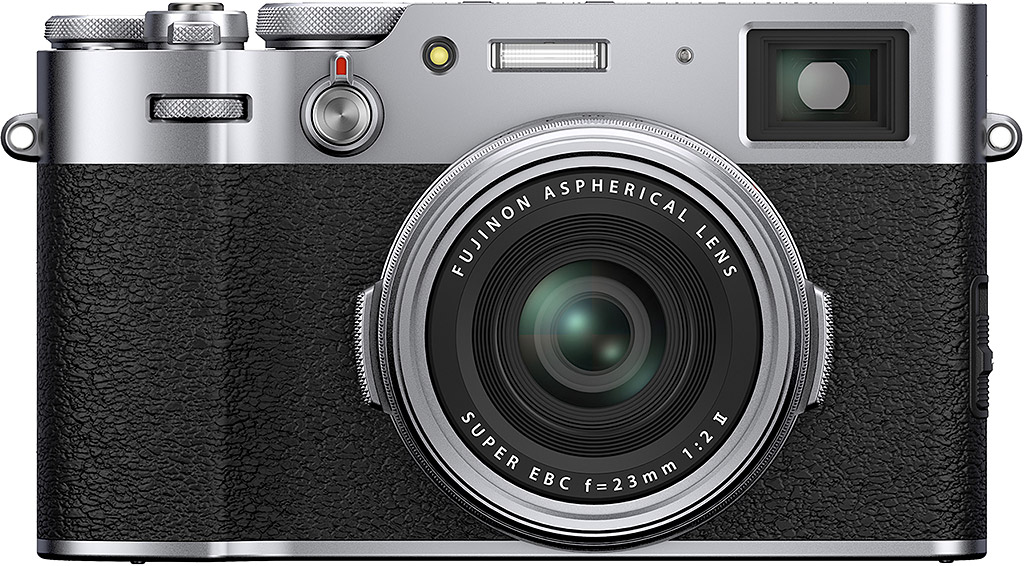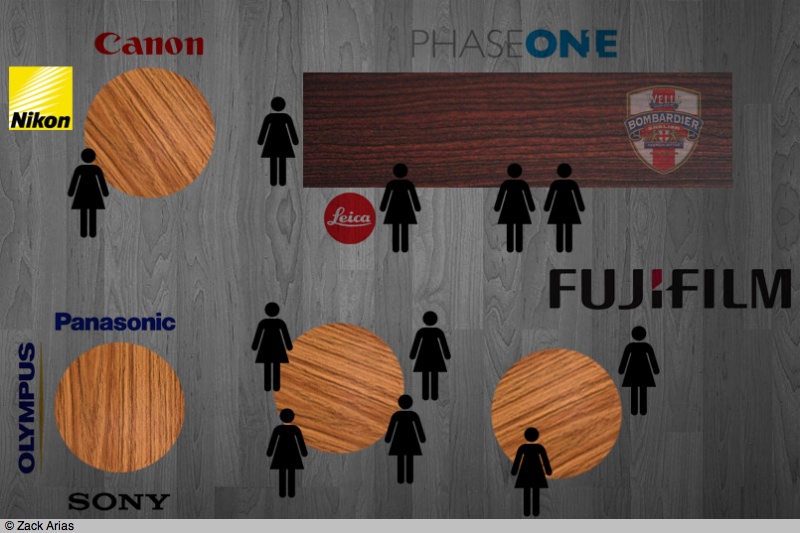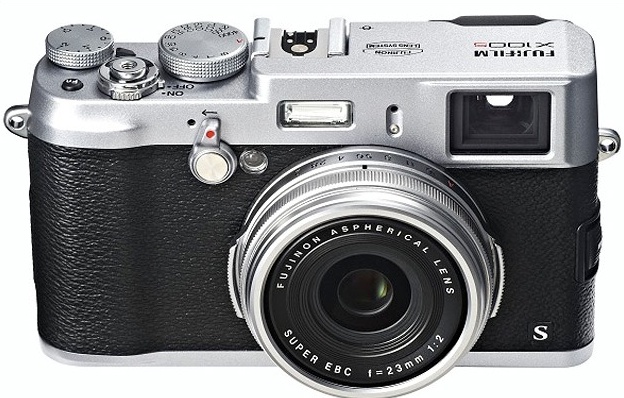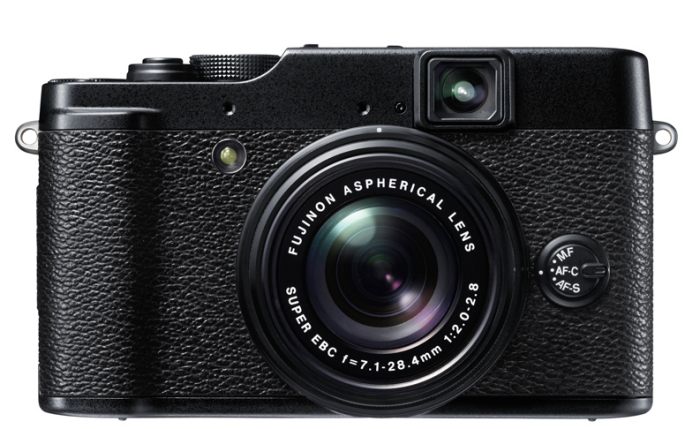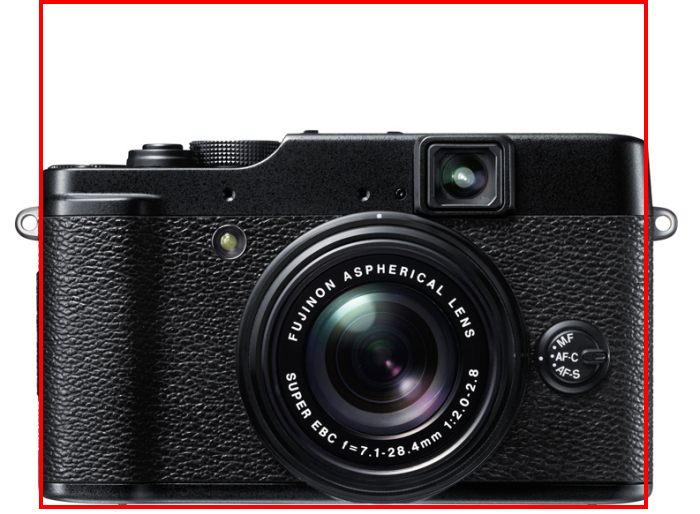Overpriced.
The recent announcement by Fuji of its interchangeable lens APS-C X-Pro1 leaves me in two minds, but let’s get one thing out of the way. This camera is not a ‘Leica killer’. At a costly $2,400 with one lens it’s one quarter of the price of the Leica M9 and simply does not compete with it, any more than a Mercedes competes with a Rolls Royce. Sure, the features may be similar, the fit and finish identical and the looks attractive but one caters to the buyer thinking he’s getting some exclusivity for his money, the other caters to the buyer with more money than sense.

The clumsily named X-Pro1 with 28, 50 and 90mm FFE lenses.
What your $2,400 gets you here is a camera with one interchangeable lens and no zoom. That certainly harkens back to the Leica rangefinder idiom in the days when zooms were awful and Leica’s viewfinder didn’t know a zoom from a hole in the ground. And while the Fuji adds autofocus (still missing from the Leica M9 with its 60 year old manual range/viewfinder) and a zoom hybrid optical/electronic finder, the optical finder’s magnification of just 0.37x is simply ghastly. Even Leica managed 0.72x in most of its M bodies and around 0.9x in the M3 and certain later variants. 0.37x, if it is to be believed, is a joke.
For this camera to be a useful street snapper – and like the Leica M it’s ill suited to other genres – then responsiveness will be key. The APS-C fixed lens X100 has poor focus speed and high shutter lag by all accounts, whereas the much cheaper X10 cures those ills but blows it with a silly, fingernail-sized sensor, good for small prints only. Though a zoom lens is currently unavailable and may be coming, the clunky use of fixed focal length lenses for a street snapper, and the delay occasioned by the occasional need to change these, is simply an anachronism in a modern, fast paced world. Significantly absent from the design is any anti-shake technology. A big omission for the price asked and for the primary use intended.
The X-Pro1 retains the well executed automation settings from the X100 (and the much earlier Rollei 6000 series medium format film SLRs, one of which I happily used for years). For shutter priority set the aperture ring to ‘A’, for aperture priority set the shutter dial to ‘A’ and for program automation set both to ‘A’. And it’s nice to have simple rings and dials for these functions, in addition to the over/under exposure dial on the top plate.
Finally, the price of all this retro-think is ridiculous. If the M9’s $10,000 price tag is simply silly, the $2,400 asked for the X-Pro1 is exorbitant. The difference between silly and exorbitant is that a select few can afford silly and not care about it, but all others have to think twice about exorbitant, meaning three times the price of the competition. If you want to pay a $1,500 premium for the admittedly gorgeous looks, then have at it. For $700 you can have your choice of MFT bodies from Oly and Panny with a capable zoom kit lens and any number of decent offerings from Canon/Nikon/Sony in APS-C.
What is wanted by the street snapper is a camera with a modest zoom range – say 28-70mm – a decent aperture, maybe f/2.8, anti-shake, a fixed lens is fine, a hand operated zoom and a decent finder, optical or EVF, married to an MFT or APS-C sensor. Responsiveness is paramount. Canon sort of gets it with its new $800 G1X, but the zoom range is too long at 28-112mm, sacrificing speed in the process for a disappointing f/5.8 at the long end. Responsiveness is also currently unknown, the optical finder appears to be the same crappy one from the G9/10/11/12 series, though the body at least includes anti-shake and the sensor is almost APS-C sized. So that’s a lot closer to the street snapper’s demand for functionality than the dated approach of fixed focal length lenses, fast as they may be, adopted by Fuji on the X-Pro1.
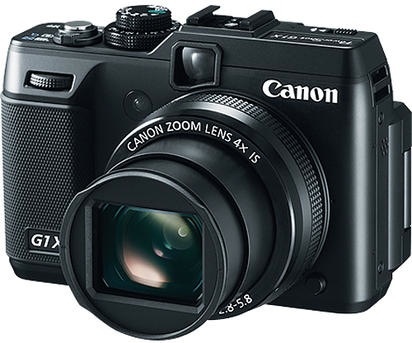
The ‘almost right’ Canon G1X.
However, these are encouraging developments. If the Fuji enjoys robust sales, one of the mass manufacturers will likely get it right and produce a sub-$1000 fixed lens, big sensor, responsive snapper with a modest range fast zoom, the latter manually operated. Electric zooms simply don’t cut it in real life street situations. Goodness knows, we have been waiting long enough. Right now the street snapper chooses from:
- Panasonic G3 or GH2. $630/900 with kit zoom. Traditional DSLR looks but with EVFs, MFT sensor, marginal ergonomics on the G3, decent lenses for the most part, attractively priced, very responsive, needless prism ‘hump’. Ugly as sin to look at.
- The Olympus MFT range, all damned by the absence of a viewfinder other than the frightful clip-on EVF designs. Attractive looks.
- Fuji X100. $1,200. No zoom, APS-C sensor, sluggish, overpriced. Gorgeous looks.
- Fuji X10. $600. Nice fast zoom, responsive, attractively priced, very small sensor. Forget about cropping and large prints. Gorgeous looks.
- Fuji X-Pro1. $2,400 with one lens. Zooms may become available later, APS-C sensor, unknown responsiveness, exorbitantly priced. Fixed focal length lenses only for now. Gorgeous looks.
- Canon G1X. $800. Almost APS-C sized sensor. Unknown responsiveness, crappy optical finder, attractively priced, slowish zoom, no manual zoom ring. ‘Wouldn’t-kick-it-out-of-bed-for-eating-crackers’ looks.
So none of these gets it quite right, but it is very encouraging to see that makers are slowly ‘getting it’. Once manufacturers start realizing that fewer features on a better executed body are what the user wants, then the right camera will follow. And if it looks half as nice as the three Fuji models, it will be an object of desire in itself.
But while the new Fuji may make those who value looks over function happy as can be, it doesn’t seem to be the answer to the street snapper’s ideal. Close, but no cigar.
